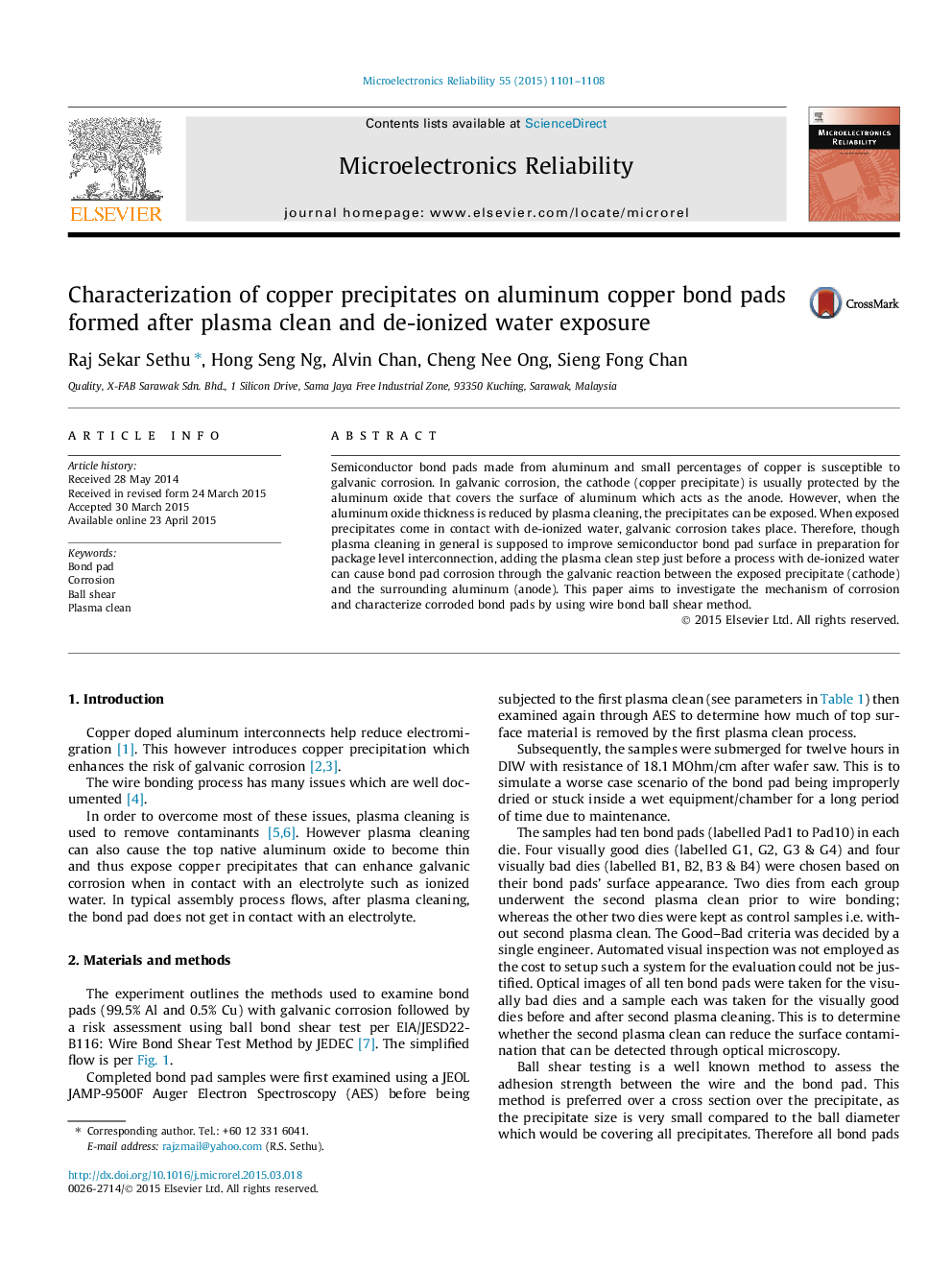| Article ID | Journal | Published Year | Pages | File Type |
|---|---|---|---|---|
| 544743 | Microelectronics Reliability | 2015 | 8 Pages |
•Plasma cleaning of aluminum copper bond pads can reduce aluminum oxide thickness.•When aluminum oxide thickness is reduced, it exposes copper precipitate.•When exposed precipitate comes in contact with water, corrosion takes place.•Subsequent plasma cleaning of corroded pads improves bond shear strength.
Semiconductor bond pads made from aluminum and small percentages of copper is susceptible to galvanic corrosion. In galvanic corrosion, the cathode (copper precipitate) is usually protected by the aluminum oxide that covers the surface of aluminum which acts as the anode. However, when the aluminum oxide thickness is reduced by plasma cleaning, the precipitates can be exposed. When exposed precipitates come in contact with de-ionized water, galvanic corrosion takes place. Therefore, though plasma cleaning in general is supposed to improve semiconductor bond pad surface in preparation for package level interconnection, adding the plasma clean step just before a process with de-ionized water can cause bond pad corrosion through the galvanic reaction between the exposed precipitate (cathode) and the surrounding aluminum (anode). This paper aims to investigate the mechanism of corrosion and characterize corroded bond pads by using wire bond ball shear method.
